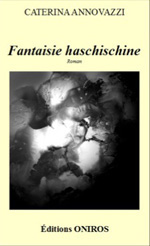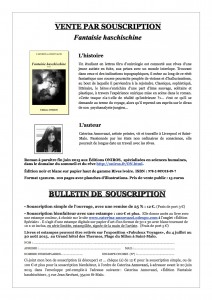A study accepted in the journal Sleep last month (but not yet published) claims that lucid dreaming should be not be considered a REM dreaming phenomenon but rather a unique state of consciousness (Voss, et al., 2009). Poetically, the assertion that lucid dreaming has elements of waking consciousness and dreaming has been made for years. But this study, conducted at the Neurological Laboratory in Frankfurt, Germany, backs the assertion with physiological data taken with an EEG.
Lucid dreams have an increased frequency in the 40Hz (GAMMA) range
Despite the small sample size, Voss and company’s findings are intriguing. Specifically, lucid dreams are shown to differ from ordinary (REM) dreams by an increased brain frequency in the 40Hz (or GAMMA) range in the frontal and frontolateral areas of the brain. These areas are considered by many scientists to be the seat of linguistic thought, as well as other higher mental functions associated with self-awareness.
This “hybrid state” of waking and dreaming fits in well with study co-author Allan Hobson’s AIM model for sleep cognition. The AIM model essentially maps and predicts possible kinds of consciousness in sleep based on three different spectra:
- whether the imagery created is external or internally sourced,
- the activation levels of the brain, and
- the modulation of the state by brain chemicals.
Lucid dreaming, the authors say, can therefore be mapped separately from ordinary dreams due, in this case, to the unique activation on the GAMMA level. The authors say the next step is to test lucid dreaming in the lab with brain imagery devices, such as a fMRI.
The Quest for Uniting the Mind and the Brain
Lucid dreaming research is really an off-shoot of this scientific tradition, especially as it looks for physical markers that coincide with subjective qualities such as self-awareness or free will. (For an introduction to lucid dreaming, here’s my beginner’s guide.)Finding the unique physiological markers of consciousness has long been the holy grail of science. We’ve had a few interesting theories along the way. For instance, Rene Descartes put his money on the pineal gland, while today other scientists say consciousness is aproduct of microtubules in the brain’s neurons.
In the 1980s, many psychologists predicted that ALPHA level frequencies ((8-12 Hz) would clearly demark lucid dreams from ordinary dreams – but further studies showed that ALPHA levels remain more or less depressed through most of sleep, including even the most lucid of dreams. (Olgivie, Vieri, Small, 1991)
More recently, Holzinger, LaBerge and Levitan published a study (2006) emphasizing how the BETA-1 (13-19 Hz) frequency band is associated with lucid dreams, more so than ordinary dreams. They further isolated this small, but statistically significant, hiccup of activity to the parietal lobe, an area of the brain associated with spatial sense and navigation.
In any case, wherever consciousness may or may not “live”, the high levels of GAMMA range of activation shown in this study need more tests with larger pools of subjects before we can say with any certainty that lucidity has a reproducible physical signature.
Brain Entrainment, Intentionality and Lucid Dreaming
Interestingly, the 40 Hz bandwidth of brain activity has a popular following in brain entrainment, a form of neuro-hynotherapy whose adherents say induces brain synchronization by listening to music with frequencies that the brain matches in response. Anecdotally, many lucid dreamers claim to have learned lucid dreaming with the help of these brain entrainment tools, such as binaural beats and light stimuli inside of sleep masks.
Brain entrainment can increase concentration, memory, and induce relaxation: all states of mind that can indirectly lead to lucid dreams.
Now just because GAMMA may be correlated with consciousness does not necessarily mean that listening to GAMMA-inducing binaural beats will automatically increase your lucid dreams. Actually, there’s no peer-reviewed study on lucid dreaming and brain entrainment. However, there’splenty of evidence that brain entrainment can increase concentration, memory, and induce relaxation: all states of mind that canindirectly lead to lucid dreams.
Most lucid dreaming brain entrainment tools available today focus on the DELTA and THETA waves, essentially paving the way for a relaxing yet alert descent into sleep onset and REM sleep. Timing is important, too; I’ll discuss more about lucid dreaming incubation techniques using binaural beats soon.
There are some correlations for the GAMMA band and consciousness, so we may see some new products on the market soon. The literature is tempting, as the 40hz band has been shown to be associated with high levels of meditation (Lutz, et al 2004) as well as the ability to be hypnotized (De Pascalis, 1993). Reduced GAMMA synchronization, on the other hand, has recently been associated with autism (Rojas, 2008).
Keep in mind — I know I sound like a broken record about this point — no lucid dreaming pill, meditation CD, or expensive biofeedback software will make you lucid. Lucidity comes by grace of intentionality, which in turn brings a cognitive habit of self-awareness. Or vice versa, by grace of spontaneous awareness, calling for a habit of intentionality.
However, binaural beats for lucid dreaming can help with laying the cognitive foundation for a strong intention and for becoming more comfortable with self-awareness in other states of consciousness, which is by far the biggest hurdle in learning how to lucid dream. The most successful binaural beats for lucid dreaming take this approach. Entrainment (which can happen through the habit of many kinds of rituals and exercises) concretizes our intentions, — the idea is made external — while boosting the brain states that lucidity thrives within.
But still, we have to do the hard work of waking up ourselves.
Lucid Dreaming: A Separate State of Consciousness ?
Beyond the possible application of future GAMMA brainwave entrainment, this study really makes a bold claim that lucid dreaming is not a dream, but a separate state of consciousness.
To be honest, I’m not sure how I feel about this designation.
Lucidity is not an On-Off switch, but a spectrum.
From a phenomenological perspective, self-awareness in dreams comes and goes. Lucidity is not an On-Off switch, but a spectrum. In fact, there’s several kinds of spectra, from volition (dream control) to self-awareness (“I’m dreaming”) to emotional meta-cognition markers (“I am angry: I wonder why.”) Voss’s and Hobson’s definition of lucid dreaming is too general to get a sense for what particular aspect of self-awareness is amplified during lucid dreams.
However, some lucid dreams really do feel like an unique state of consciousness with the best aspects of dreaming and waking cognition. For this reason, anthropologist and neurophilosopher Micheal Winkelman (2000) has called lucid dreaming a “shamanic state of consciousness,” because it “integrates the potentials of dreaming and waking consciousness” (p. 135). And consciousness scholar Harry Hunt (1988) has said that lucid dreaming is really a peak experience the way Abraham Maslow used the word, as a state defined by clarity, exhilaration, and openness. So there is some support from the transpersonal psychologists (who study altered states for a living) on this idea of lucid dreaming as a distinct state in its own right.
In sum, because cultural styles of what “lucidity” means affect which brain areas activate during a so-called lucid dream, the GAMMA signature should be taken with a grain of salt. That said, if the 40 Hz signature can be repeated clinically, then lucid dreaming could help neuroscientists find other markers of conscious thought in sleep, leading towards a renaissance of directed and unconstrained brain mapping. This, over time, has the potential to revise our understanding about the interaction between mind and matter.
Cited:
De Pascalis, V. (1993). EEG spectral analysis during hypnotic induction, hypnotic dream and age reduction. International journal of psychophysiology, 15(2), pp.153-166.
Holzinger, B. Laberge, S., Levitan, L., (2006) Psychophsiological correlates of lucid dreaming. Dreaming. 16(2), pp. 88-95.
Hunt, H. (1989). The multiplicity of dreams: memory, imagination and consciousness. Yale University Press.
Hurd, R. (2009) Lucid dreaming science: new evidence of GAMMA band activation. Lucid Dream Exchange, Fall 2009.
Lutz, A., Greishar, L., Rawlings, N., Ricar, M., Davidson, R.J. (2004). Long-term meditators self-induce high-amplitude gamma synchrony during mental practice. Proceedings National Academy Science, USA 101(46), pp. 16369-16373.
Ogilvie, R., Vierna, K., Small, R. (1991). EEG activity during lucid dreaming. Lucidity 10 (1&2), pp. 224-226.
Rojas DC, Maharajh K, Teale P, Rogers SJ. (2008). Reduced neural synchronization of gamma-band MEG oscillations in first-degree relatives of children with autism. BMC Psychiatry. Aug 1;8:66
Voss, U., Holzmann, R., Tuin., Hobson, J.A. (2009). Lucid dreaming: a state of consciousness with features of both waking and non-lucid dreaming. Accepted but not published yet in Sleep.http://www.journalsleep.org/Accepted.aspx
Winkelman, M. (2000). Shamanism: the neural ecology of consciousness. Westport, CT: Bergin & Garvey.
Article intéressant à propos des recherches menées par Ursula Voss
posté le 18/5/14 par Roger R.


